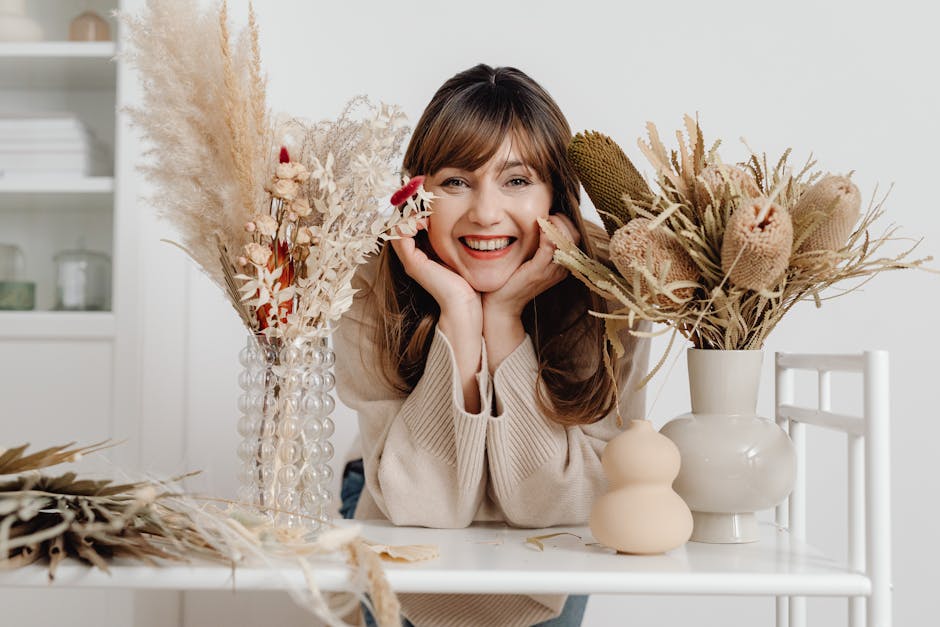Why a Gallery Wall Is More Than Just Decor
A gallery wall is more than a backdrop—it’s a storytelling canvas. Thoughtfully curated, it reflects not only family memories but also the unique personality of the people who live within those walls.
Create a Visual Narrative
– Think beyond decoration: your gallery wall can serve as a timeline.
– Use photographs, mementos, and art pieces that tell a story—from generations past to everyday present moments.
– Trace your family’s journey through visual cues that anchor memories in place.
Showcase Personality, Memory, and Style
A well-composed gallery wall should feel both curated and authentic. Strike a balance between polished design and heartfelt expression:
– Blend formal portraits with spontaneous moments.
– Add personal style with frames, mediums, and color palettes.
– Let your unique aesthetic guide the way—minimalist, eclectic, rustic, or modern.
Bridge the Generations
Gallery walls can become tools of connection, linking older and younger family members through the stories they represent.
– Include multi-generational photos, vintage letters, or heirloom items.
– Pair them with present-day art, kids’ drawings, or recent milestones.
– Encourage conversations about the people and places that shaped your family’s path.
A gallery wall isn’t just about the past—it celebrates where you’ve been, where you are, and what’s still to come.
Step 1: Choose a Theme That Reflects Your Story
Start simple. A gallery wall isn’t about matching tones—it’s about marking time. Think of the big stuff first: a wedding photo in soft black and white, a passport-stamped shot from your first trip abroad, or a quiet moment from the day your child was born. These are anchor points. Milestones like these give your wall meaning.
But don’t stop at the headlines. Sometimes, it’s the everyday stuff that says the most. A scribbled note a toddler left on the fridge. The grainy Polaroid from a lazy backyard afternoon. That doodle they made in kindergarten that made zero sense—but made you laugh out loud? Frame it.
Here’s what makes a wall really feel layered: time. A photo of your grandfather in his military uniform next to your niece in a Halloween costume. Your mom’s vintage embroidery paired with a recent family portrait. Blur the lines between past and present. Show how the story keeps moving.
If you’re feeling overwhelmed, don’t. You don’t need to cover every inch. Pick 3 to 5 core pieces that spark emotion—they’re your starting point. Build from there. The story unfolds as you live it.
Step 2: Mix Mediums That Match Your Style
Sticking to just photos can flatten your story. Great gallery walls mix things up—think family portraits next to a kid’s crayon drawing, or a canvas print of your favorite place beside a vintage textile from grandma’s old house. This kind of layering adds texture and depth, both visually and emotionally.
Try combining various formats: black-and-white photos, hand-drawn illustrations, heirloom fabrics, or even scanned pages from journals. Don’t be afraid to use 3D elements like shadow boxes or small shelves to add depth. Frames can help define each piece, but mixing fonts, quotes, and layouts will carry your wall beyond decoration—into personality and voice.
Typography has its place here too. A simple phrase like “Our roots run deep” or a line from a favorite song can anchor the wall. It humanizes the space and cuts through visual noise.
For a gentle, grounding contrast, sprinkle in nature-inspired accents—think dried botanicals, wood textures, or even a small pressed fern behind glass. These touches keep the wall from feeling too hard or staged. Want more ideas? Check out Nature-Inspired Home Accents for Added Tranquility.
Step 3: Map It Out Before You Hang
Before you start hammering nails, pause. Grab some kraft paper, cut it into shapes that match your frames, and tape them to the wall. This might seem low-tech, but it’s the best way to get a feel for your layout—without damaging drywall or guessing spacing. Plus, it lets you shuffle things around until your wall starts to tell the story you want.
This step is part art, part logistics. Emotion matters—this is your family narrative, after all—but so does balance. A chaotic wall full of meaning can still fall flat if the layout feels off-kilter. Take the time to plan.
Now, about layouts. A grid gives clean order—think symmetry and calm. Salon-style (where pieces are arranged tighter and sometimes layered) feels more organic and full of life, like memory itself. Organic layouts play even looser, suggesting the path of time or instinctual flow. Choose what fits your voice and your home. This isn’t gallery perfection; this is your family, your story.
The wall’s going to speak—make sure it says the right thing.
Step 4: Frame It Right
Framing is more than a finishing touch—it’s a design decision that shapes how each piece is perceived. The right frame can unify a gallery wall, reflect your home’s style, and turn individual memories into a cohesive visual story.
Choose Consistent or Complementary Looks
You don’t need every frame to match. In fact, a mix of frame styles can add charm and depth as long as there’s a shared visual thread.
– Stick to a consistent color palette (e.g., all black, all metallics, or warm wood tones)
– Vary textures or finishes while staying within the same tone range
– Use similar frame sizes or styles to create symmetry, even with different materials
Match the Mood of Your Home
Take cues from your interior design style when selecting frame types:
– Modern homes: Clean lines, thin metal or matte black frames
– Rustic or farmhouse settings: Distressed wood, reclaimed materials
– Eclectic or boho spaces: A mix of ornate, vintage, and minimalist designs adds layered character
Don’t Underestimate the Power of Mats
Mats help artwork and photographs breathe. They set visual boundaries and add polish to simple prints.
– White or off-white mats keep the focus on the image
– Colored mats can tie in with your room’s palette or highlight a dominant hue in the artwork
– Larger mats add drama and can elevate smaller pieces into centerpieces
By being intentional with your framing choices, you ensure each piece contributes to the story you’re telling—while also complementing the overall aesthetic of your home.
Step 5: Add Interactive Elements
Gallery walls don’t have to be static. In fact, the most memorable ones are dynamic and interactive, offering fresh moments of connection every time someone looks at them.
Make Room for Change
Think beyond traditional frames to incorporate elements that can evolve with your family:
– Chalkboards or whiteboards: Great for seasonal messages, quotes, or little notes from the kids.
– Rotating clips: Swap in new artwork, report cards, or favorite photos as life moves forward.
– Shadow boxes: Add tangible keepsakes like baby shoes, souvenirs, or event tickets that enhance the story visually and emotionally.
Hidden Stories with a Digital Twist
Add a thoughtful layer of discovery by blending digital elements into your gallery:
– Handwritten notes tucked behind photos can provide a sweet surprise.
– QR codes linking to family videos, digital albums, or recorded oral histories can turn a glance into a deeper experience.
Invite Interaction
Interactive gallery walls invite dialogue, not just admiration:
– Leave space for guest comments or rotating contributions from your children, especially during gatherings where you might print custom invitations to bring everyone together
– Include prompts like, “Do you remember this day?” or “Add your favorite memory here.”
Creating space for storytelling—both past and future—gives your wall the power to connect not just visually, but emotionally.
Final Touches: Lighting, Spacing, and Updating Over Time
Once your gallery wall is up, don’t call it done. The right lighting brings it to life—use small, directional lights or picture lights to emphasize meaningful pieces. A soft glow over a vintage photo or a wedding snapshot gives it the attention it deserves without overdoing it.
When arranging the layout, leave some breathing room. Empty space isn’t a mistake—it’s an invitation. Your family’s story is still unfolding, and those blank spots are placeholders for what’s still to come: new milestones, new memories, new magic.
And here’s the part most people skip: come back to it. Once a year, maybe around the holidays, look at what deserves to be added or swapped. Stories evolve. So should your wall. Each refresh is a reminder that home is a living, growing archive—not just a snapshot.
Bring It All Together
A gallery wall isn’t something you finish—it’s something you live with. As your family changes and grows, so does the wall. New experiences, new faces, new stories. It’s not about perfection or symmetry—it’s about capturing what matters in the moment and giving it a place to live.
A good gallery wall doesn’t just look good—it feels right. Every piece tells a story, and when they’re all up there together, it becomes something more: a living, evolving portrait of who you are. It doesn’t matter if your style is sleek and modern or textured and rustic—what matters is that your wall says something true.
So don’t treat it like static decor. Keep adding. Shift things around. Let it breathe. Because at its best, a gallery wall doesn’t just display your story—it tells it.




